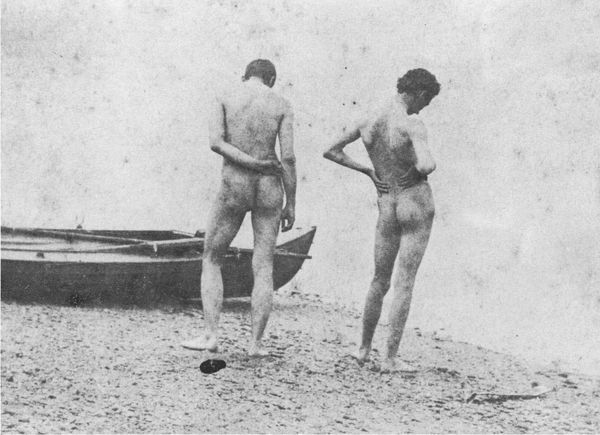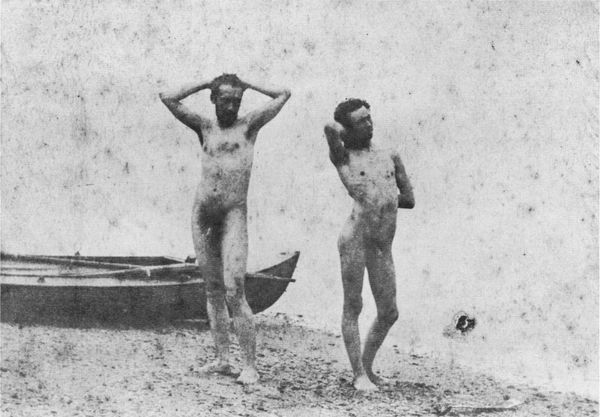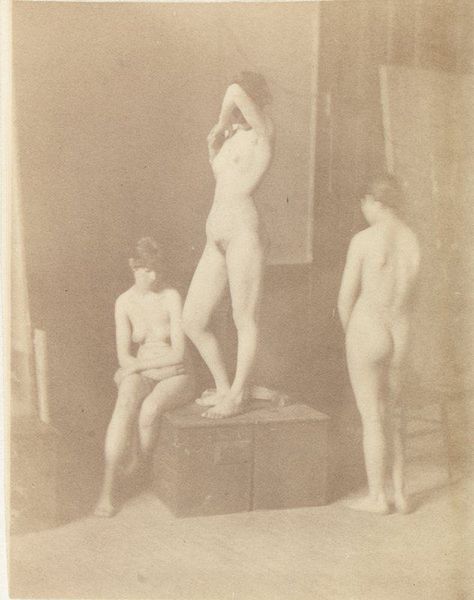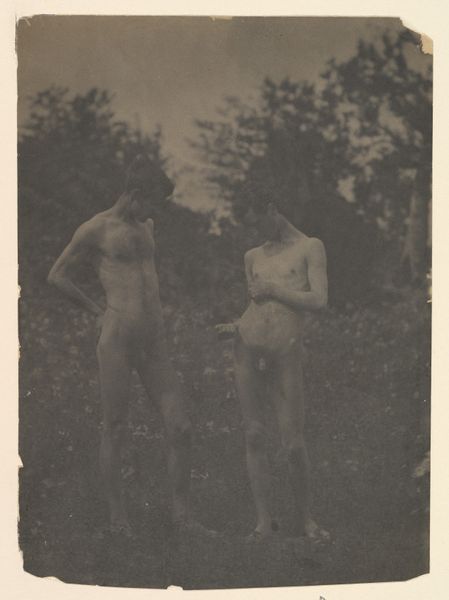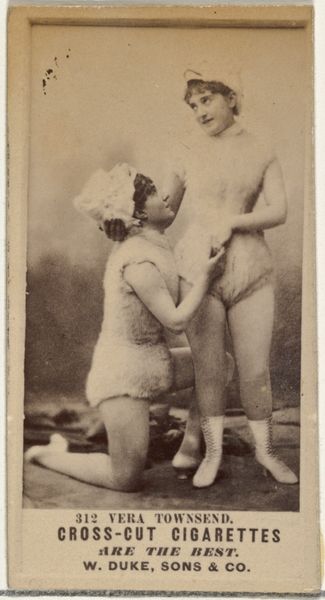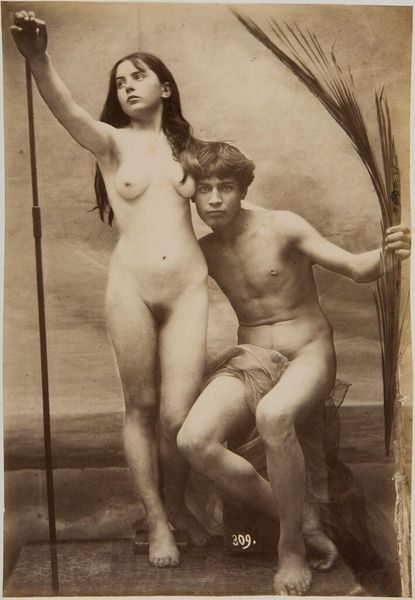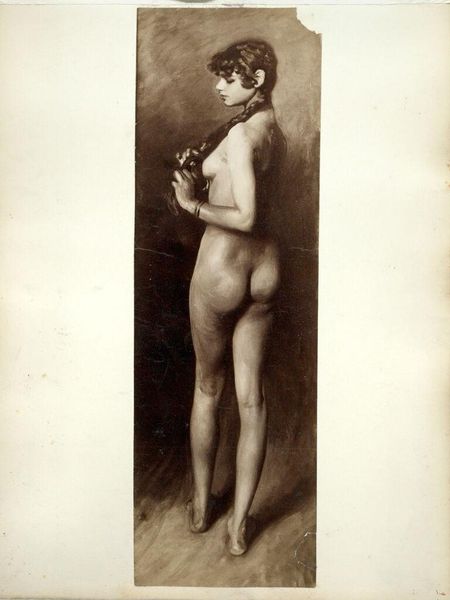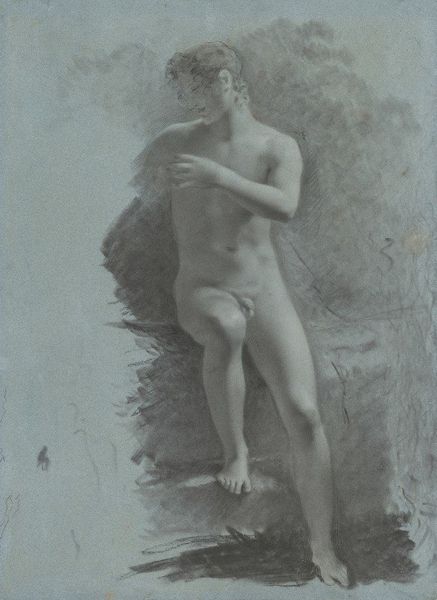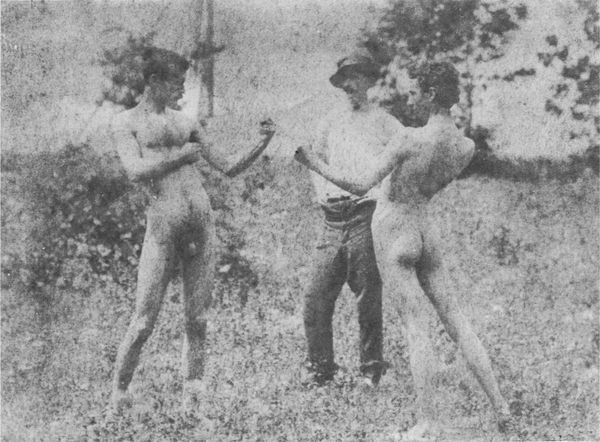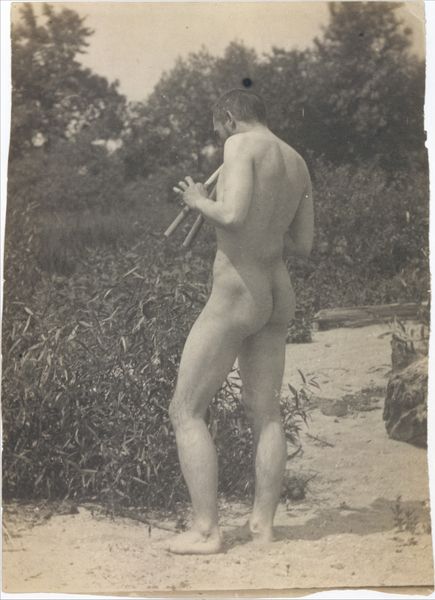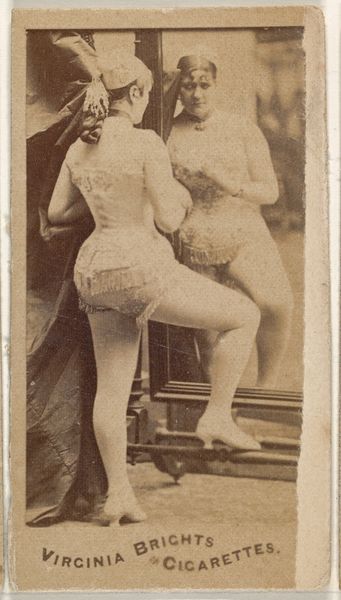
photography
#
portrait
#
photography
#
portrait reference
#
19th century
#
human
#
genre-painting
#
academic-art
#
nude
#
realism
Copyright: Public domain
Curator: What strikes me first about this photograph, "Thomas Eakins and John Laurie Wallace on a Beach" made around 1883, is the deliberate choice to photograph these figures from behind. It’s almost confrontational. Editor: I agree; the vulnerability is striking. It feels stark, unvarnished, a rejection of idealized forms prevalent at the time. A rather homoerotic undercurrent. Curator: Exactly. Eakins' interest was in realism, documenting the human form as it truly is, in its unadorned state. He wasn't afraid to challenge the Victorian era’s rather stringent social mores. The two figures appear anonymous; they are presented on this pebbled beach near their boat. Editor: He definitely pushed against prevailing notions of gender and the body. The image carries strong references to classical ideals of male friendship while also making it visually available. It invites speculation about their relationship beyond that of artist and model. Is there also an acknowledgement that male bodies and relationships exist and can also be made visually available? Curator: The symbolism here feels both naturalistic and highly considered. The positioning of the figures, the soft light, everything contributes to the impression of something…almost elemental. It’s about returning to a state of nature, a sort of pre-civilization freedom. Editor: While, yes, there is a connection with the return to the classical ideals, one must remember the complicated social and economic status underlying such gestures. Did Eakins fully consider whose bodies were available in this way to his camera lens, and why? His representations lack a racial or class intersectional element that makes me pause. Curator: A fair point, absolutely. Yet I still believe the photograph carries echoes of classical sculpture. Editor: Perhaps this points to how historical representation may be co-opted to very different ends, in ways neither beautiful nor productive. Curator: Yes, historical images force us to examine underlying motivations as we learn from visual memory and continuity. Editor: Which prompts crucial discussions about who gets to claim ownership of representation and visibility, then and now.
Comments
No comments
Be the first to comment and join the conversation on the ultimate creative platform.
